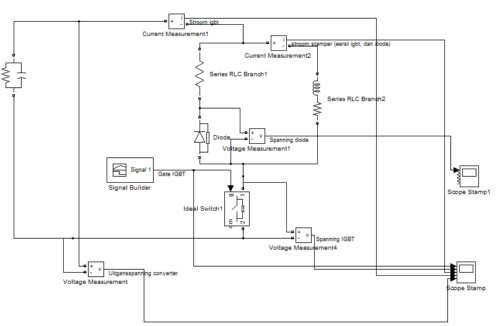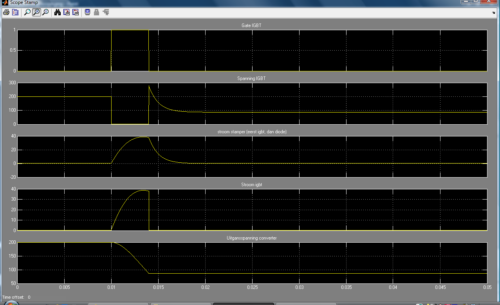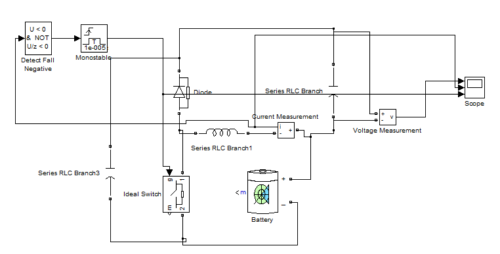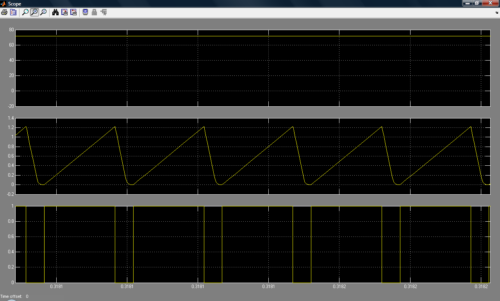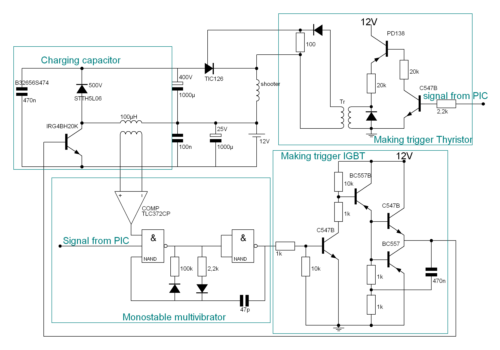The shooter mechanism consists of an iron core inside a coil. The current through the coil results in a magnetic field, which pulls the core to its equilibrium state in the middle of the coil. The mass of the core should be equal to the mass of the ball to have the most efficient energy transfer during the collision. A high speed of the core at collision with the ball is what we want to achieve. Therefore we need a coil with a low time constant. The time constant is L/R, so the inductance should be small (few windings) and the resistance should be high (small wire diameter). However, this is in conflict with a high current and thus a high force acting on the core. Therefore the applied voltage needs to be very high. The 12V supplied by the batteries are way insufficient. Our answer is a boost-chopper circuit which can load a large capacitor to 200-400V. When the shooter is triggered, the capacitor provides a current of nearly 100A for a very short time.
This theory was off course first simulated into Matlab to be sure that everything works properly. The whole explanation of this simulation is very boring and complex, so those who really are interested can always contact Branko. Below you see some screenshots of the simulations. Click on images to see them enlarged.
Because of a lack of time, this circuit was not tested, but we are sure that it works as it should. To see the results of the first simple test, click here.
Copyright © 2009 • Ward De Paepe • All Rights Reserved |
